“At Tantuja, we have earned a reputation for quality, dedication and fulfilling commitments. It was not an easy task to write a turnaround story for a perennial loss-making concern into what the Society is today-a more than Rs. 400 Cr company with noticeable presence in all segments of textile. We have gained trust of our customers through extreme hard work and dedication to quality. Our handloom products are developed keeping in mind latest design trends, purity of raw materials and dye and budget of all customer groups.”
“Handloom is an art which dates back to several centuries. While at Tantuja, we thrive at reaching to the furthest village of the state in bringing the product of a weaver to the consumer, it’s our sincerest request to every citizen to choose handloom product for the next purchase. It will not only contribute to the livelihood of a weaver’s family, but also towards preserving the glorious tradition in its true form and a zero-carbon footprint industry.”
☆ Marketing of Handloom Goods produced by Primary Weavers’ Cooperative Societies(PWCS), SHG and Clusters
☆ Supply of ISI standard Gauze bandage to Govt.Hospitals
☆ E-Commerce through Flipkart, Amazon(India and USA) and Gocoop.
☆ Running of State Design Centre at Salt Lake,Kolkata



The heritage of baluchari weaving consists of a combination of islamic and hindu cultures in its visual imagery. It is a craft with the most elaborate detailing at extra weft techniques on body, borders and end piece. The speciality of baluchari lies in the design of the pallu or aanchal, border and motif on the ground, along with the purity of the raw material of mulberry silk.

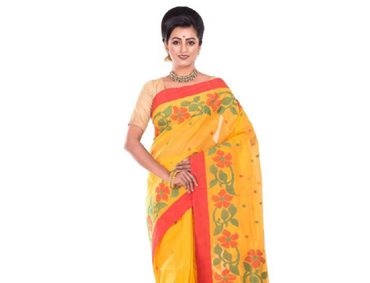
It is believed that the bengal muslin weaving reached. Its peak of technical perfection during the mughal rule. Jamdani is the technique used to decorate the plain mulmul, muslin, with the addition of supplementary extra cotton wefts, to create dense patterns against a semi-transparent background. About 5,000 weavers are engaged in the production of such sarees with an annual estimated turnover of rs 150 crore.
The traditional tangail borders had a “paddo” or lotus pattern,“prodeep” or lamp pattern, or the “lata-pata” or vine pattern apart from the popular “aanshpaar” which was common to the santipuri tradition. From the use of a single colour on the border, they began to use two or three colours on the borders to form a “meenakari” effect. About 100,000 weavers are now engaged in the production of tangail and tangail jamdani sarees with an annual estimated turnover of rs 1500 crore.


These sarees have a very fine texture and exude s sophistication and subtlety of temperament, often woven in plain off-white grounds offset by narrow, intricately worked border in red, black or green. The weavers of santipur have adapted to changing tastes and now produce sarees with modern designs as well as exportable products like scarves and stoles. About 30,000 weavers produce an estimated rs. 400 crore worth of santipuri sarees today.
When compared with dhanikhali sarees, begampuri sarees are much brighter in shade. This type is being woven since the early six ties, by a large group of cotton weavers. The low-maintenance cotton saree famous for its distinctive weave can be draped in the most elegant ways.
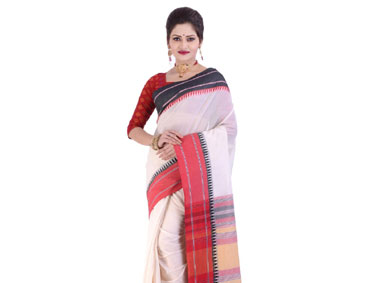
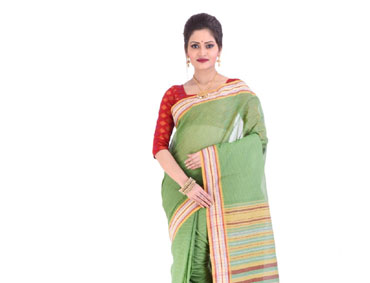
Its peak of technical perfection during a dhaniakhali saree can typically take anything between 2 to 5 days to be woven. The place dhaniakhali in the district of hooghly, used to be famous for its signature dhotis. Changing time altered the course of demand and supply, and dhanikhali weavers shifted to weaving fine quality sarees, mostly in pastel shades. Perfect for the middle class budget, the dhaniakhali saree has now become the flagship product of the region with its unique shade and comparatively heavier and coarser material.
In the sericulture process that sets it apart from other kinds of silk. Because the silkworms of the bombyx mori moth are fed only mulberry leaves, the resulting silk is some of the finest available in the world. Pure white in colour and made up of individual long fibres, mulberry silk is more refined than other types of silk. Due to this reason, when this silk is printed on using block, screen or batik technique, the product is a vibrant and lustrous piece of fabric.
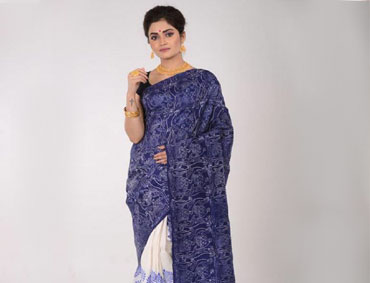
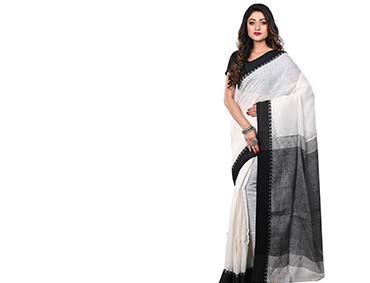
Linen is a natural comfortable and breathable fabric, perfect for summer due to its high absorbent property. Linen sarees produce a contemporary and corporate outlook from the use of subtle shades and geometric patterns in weaving. A linen saree is also a perfect choice when it comes to wonderful fall of fabric and ease of draping.
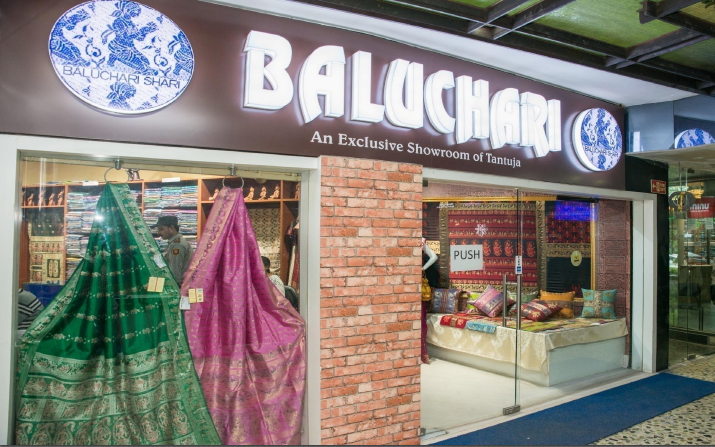



☆ Structured approach to designing and producing according to the market trend
☆ Massive product diversification
☆ Revival of traditional products
☆ Brick-and-mortar store expansions
☆ National Award For Marketing Of Handloom Products, 2015 By Ministry Of Textiles, GOI
☆ Images Retail Award For The Best Turnaround Story Of 2016
☆ National Award For Design And Development 2018
☆ Skoch Platinum Award 2020
☆ Skoch Platinum Award 2022